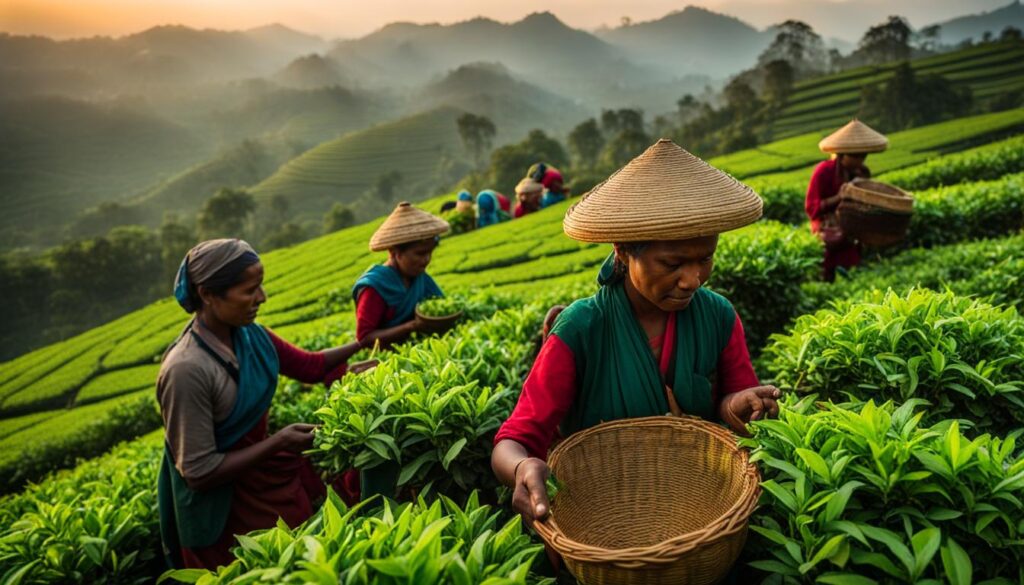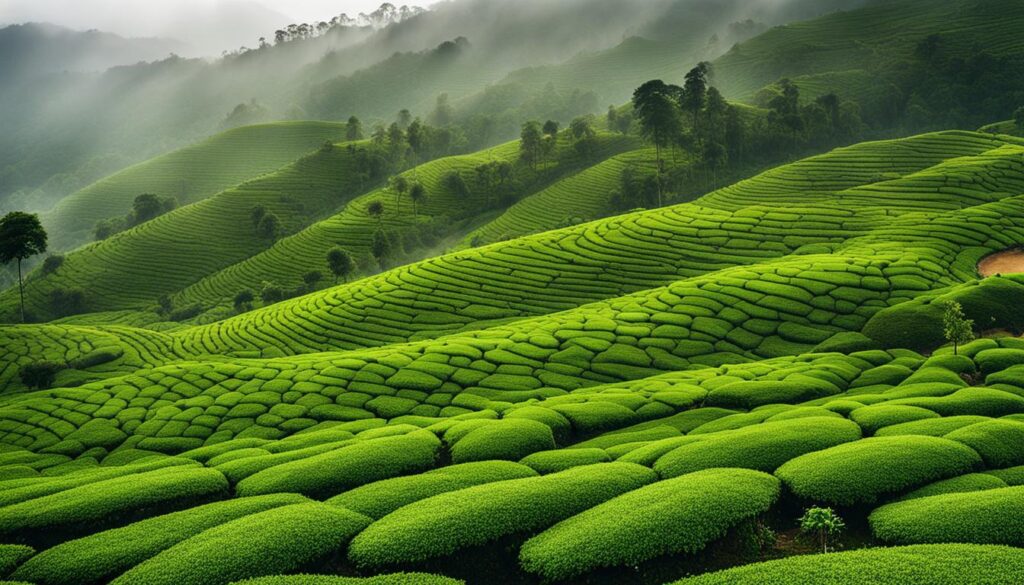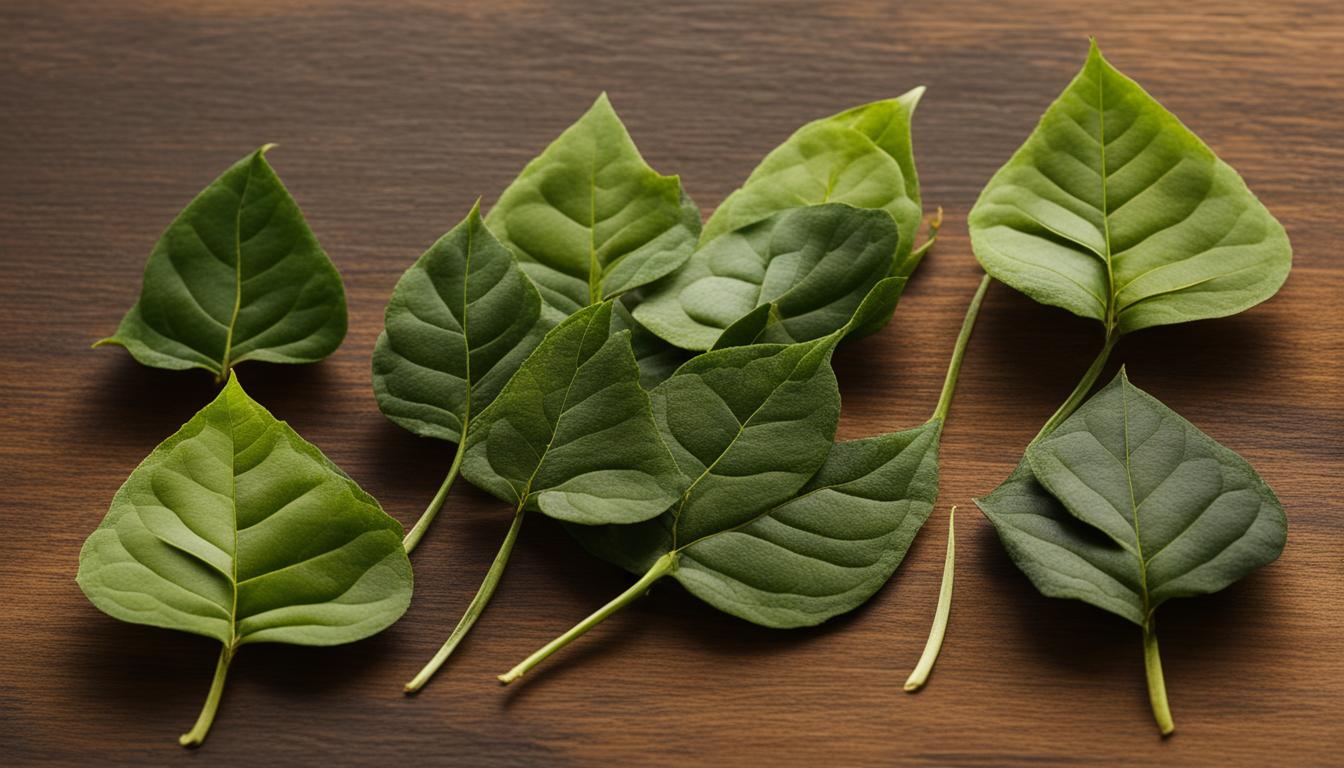Greetings tea enthusiasts! Today, we embark on a flavorful journey to explore the impact of regional harvesting techniques on the quality of our beloved tea. Join us as we delve into the fascinating world of tea leaf harvesting, uncovering the secrets behind the flavors, aromas, and overall quality of this ancient beverage.
When it comes to tea, quality is of utmost importance. The way tea is harvested can make a world of difference in its taste and characteristics. From traditional plucking methods to modern harvesting innovations, each technique leaves a unique imprint on the tea leaves. Factors such as the timing of the harvest, environmental conditions, and elevation of the tea plantation all contribute to the final product that fills our cups.
So, why does regional tea harvesting matter? By studying the differences in harvesting techniques across various regions, tea growers can fine-tune their practices to produce teas of exceptional quality. As we immerse ourselves in the world of tea, we’ll uncover the secrets behind the perfect cup, sip by sip.
Key Takeaways:
- Regional harvesting techniques have a significant impact on tea quality.
- The timing of the harvest and selection of tea leaves play a crucial role in flavor development.
- Traditional and modern harvesting techniques offer different advantages and considerations.
- Environmental factors, such as climate and altitude, influence tea quality.
- Terroir, the unique combination of environment and geography, affects the flavor profile of tea.
The Role of Harvest Timing in Tea Quality
When it comes to tea quality, the timing of the harvest plays a crucial role. Different regions have specific harvest timing practices based on climate, elevation, and tea variety. Early spring harvests are often prized for their tender leaves and delicate flavors, while late summer or autumn harvests may result in bolder and more robust teas.
The selection of specific tea leaves during the harvest also influences the quality of the final product. Tea growers carefully choose between young buds or mature leaves, which can impact the flavor and characteristics of the tea. These regional differences in tea harvesting techniques and harvest timing are vital in producing teas of the highest quality.
Understanding the optimal harvest timing and the effect it has on tea quality allows tea producers to ensure the best flavor and aroma in their teas. By aligning their practices with regional differences and adopting tea leaf selection techniques, producers can unlock the true potential of their teas and provide tea enthusiasts with an exceptional tea experience.
The Impact of Harvest Timing on Tea Quality:
Early spring harvests are known for their tender leaves and delicate flavors, while late summer or autumn harvests produce bolder and more robust teas.
| Region | Harvest Timing | Tea Quality |
|---|---|---|
| Assam, India | Spring (March-April) | Bold and malty |
| Uji, Japan | Spring (April-May) | Fresh and grassy |
| Wuyi Mountains, China | Autumn (September-October) | Rich and smoky |
As shown in the table above, the specific harvest timings in different regions can yield teas with distinct flavors and characteristics. This highlights the importance of understanding the impact of harvest timing on tea quality and selecting the optimal time to pluck tea leaves.
By considering the regional differences in tea harvesting practices and the effects of harvest timing, tea growers can ensure that their teas offer an exceptional sensory experience, delighting tea enthusiasts with the finest flavors and aromas.

Traditional vs Modern Tea Harvesting Techniques
Tea harvesting techniques have undergone significant transformations over time, with traditional methods being used for centuries and modern innovations being introduced to increase efficiency and productivity. Traditional plucking techniques, such as hand-picking, have been revered for their meticulous selection of tea leaves and minimal damage to the plant. These methods are often labor-intensive but result in teas with unique flavors and characteristics that are highly sought after by tea enthusiasts.
Modern tea harvesting innovations, on the other hand, have brought about mechanization and automation to increase efficiency and reduce costs in large-scale tea production. Mechanical plucking and automated harvesting machines have revolutionized the industry, making it easier to harvest large quantities of tea. However, the use of modern techniques can also impact the quality of the tea if not executed with care and consideration. Tea growers must balance the benefits of modern technologies with sustainable practices to uphold the integrity and quality of their teas.
“Traditional plucking techniques have been mastered over generations and ensure careful selection of the most suitable leaves for tea production.”
To ensure sustainable tea harvesting practices, tea growers can employ techniques that preserve the environment while maintaining quality. For example, organic farming methods reduce the use of harmful chemicals and promote biodiversity, resulting in healthier tea plants and better tea quality. Responsible water management practices can also contribute to sustainable tea production by conserving water resources and minimizing water pollution. By prioritizing sustainability, tea producers can not only protect the environment but also enhance the overall quality and authenticity of their teas.
Comparing Traditional and Modern Tea Harvesting Techniques:
| Traditional Tea Harvesting Techniques | Modern Tea Harvesting Innovations |
|---|---|
| Hand-picking tea leaves | Mechanical plucking |
| Labor-intensive | Efficient and time-saving |
| Minimizes plant damage | Potential for increased plant damage |
| Unique flavors and characteristics | Greater consistency in flavor |
| Requires skilled labor | Reduces labor demand |
By understanding the differences between traditional and modern tea harvesting techniques, tea growers can make informed decisions regarding their harvesting practices. Whether they choose to embrace the time-honored traditions of hand-picking or adopt the efficiency of mechanical plucking, it is crucial to prioritize sustainable methods that preserve the quality and integrity of the teas we enjoy.
Impact of Environmental Factors on Tea Quality
Tea, being a sensitive plant, is greatly influenced by environmental factors, which ultimately impact its quality. Factors such as climate, soil conditions, and altitude play a crucial role in determining the chemical composition and flavor of the tea leaves. Understanding how these environmental factors affect tea quality is essential for tea growers and producers who strive to deliver the best tea to consumers.
Climate, in particular, has a profound impact on tea quality. The temperature, rainfall patterns, and sunlight exposure in a tea-growing region can significantly influence the chemical reactions that occur within the tea leaves. For example, teas grown in cooler climates tend to have a higher concentration of aromatic compounds, resulting in more complex flavors and fragrances. On the other hand, teas grown in warmer climates may have a bolder and more robust flavor profile.
Soil conditions also contribute to the unique characteristics of tea. The mineral composition and pH level of the soil can affect the nutrient uptake of the tea plant, which in turn influences the flavor, aroma, and overall quality of the tea leaves. Different soils yield different teas, each with its own distinct taste and profile.

Altitude is another crucial environmental factor that impacts tea quality. Tea plants grown at higher elevations tend to experience cooler temperatures, which slows down the growth of the leaves and alters their chemical composition. The slower growth allows for the development of more complex flavors and aromas, resulting in teas that are highly prized by tea enthusiasts.
To ensure sustainable tea production, it is important for tea growers to implement environmentally-friendly practices. By adopting organic farming methods and responsible water management techniques, tea farms can minimize negative environmental impacts while promoting the health and vitality of the tea plants. Sustainable tea harvesting practices not only preserve the natural surroundings but also contribute to the overall quality and authenticity of the tea.
The Influence of Terroir on Tea Flavor
Terroir, the unique combination of climate, soil, and geography in a specific region, plays a crucial role in shaping the flavor profile of tea. The environmental conditions in which the tea plants grow directly influence the chemical composition of the tea leaves, resulting in distinct flavors and aromas. Factors like temperature, rainfall patterns, soil composition, and altitude can all contribute to the unique terroir of a tea-growing region. Teas from different terroirs often have specific flavor characteristics and are highly valued by tea connoisseurs. Understanding the influence of terroir on tea flavor can help tea growers identify and highlight the unique qualities of their teas.
The Importance of Environmental Factors
“The environmental conditions in which tea plants grow can have a profound impact on the taste and aroma of the final product.”
When it comes to tea production, the environment matters. The right combination of climate, soil, and altitude can create the perfect conditions for growing high-quality tea. The unique characteristics of the terroir influence the plants’ growth, resulting in a distinct range of flavors and aromas. For example, teas grown in higher altitudes tend to have a more complex and nuanced taste, while teas grown in lowland regions may have a milder profile.
Regional Differences in Tea Flavor
“Teas from different terroirs often have specific flavor characteristics and are highly valued by tea connoisseurs.”
The concept of terroir is widely recognized in the world of wine, but it also applies to tea. Just as the soil and climate affect the flavors of grapes, they also impact the taste of tea leaves. Different regions produce tea with unique flavor profiles because of their distinct environmental conditions. For example, teas grown in the high altitudes of Darjeeling, India, are known for their muscatel flavors, while teas from the Fujian province in China offer floral and fruity notes.
Embracing the Diversity of Tea
Terroir plays a vital role in honoring the diversity of tea. It allows for the cultivation of a wide range of flavors and styles, providing tea enthusiasts with an array of choices. By understanding the influence of terroir on tea flavor, we can appreciate the craftsmanship and artistry that goes into producing unique teas. Whether you prefer a delicate and floral oolong or a rich and robust black tea, terroir ensures that every cup of tea tells a story of its origin.
Brewing Parameters and Tea Quality
When it comes to brewing the perfect cup of tea, understanding the key parameters is essential to achieve the desired taste and quality. The brewing temperature and steeping time play a crucial role in extracting the flavors and aromas from the tea leaves. By optimizing these parameters, you can enhance your tea-drinking experience and unlock the full potential of your favorite teas.
Let’s start with the brewing temperature. Different types of teas require different temperature ranges to bring out their unique characteristics. For delicate green teas, a lower brewing temperature, around 160°F to 175°F (70°C to 80°C), is recommended. This lower temperature helps prevent the tea from becoming bitter and preserves its delicate flavors. On the other hand, robust black teas can withstand higher temperatures, typically between 200°F to 212°F (90°C to 100°C), to extract their full-bodied richness.
Steeping time is another crucial factor to consider when brewing tea. The duration of steeping directly impacts the strength and complexity of the brewed tea. For lighter teas, such as white or green teas, a shorter steeping time of 1-3 minutes is often sufficient to achieve a delicate and balanced flavor. Conversely, darker teas like oolongs and black teas benefit from a slightly longer steeping time, ranging from 3 to 5 minutes, to bring out their full flavor potential.
“The brewing parameters, such as water temperature and steeping time, can greatly impact the quality and taste of brewed tea.”
Optimizing the brewing parameters will require some experimentation and personal preference. It’s essential to find the right balance that suits your taste buds and brings out the desired characteristics of the tea you’re brewing. Keep in mind that tea brewing is an art form, and as you continue to explore different teas and refine your brewing technique, you’ll learn to appreciate the intricate nuances that each tea variety has to offer.
Summary:
- Pay attention to the brewing temperature, as different teas require specific temperature ranges to enhance their flavors.
- Steeping time directly affects the strength and complexity of the brewed tea, so adjust it according to your preference and the type of tea being brewed.
- Experiment with brewing parameters to find the ideal balance of temperature and steeping time for your favorite teas.
Conclusion
We’ve explored the fascinating world of regional tea harvesting techniques and their impact on the quality of this beloved beverage. From the timing of the harvest to the choice between traditional and modern techniques, every aspect plays a crucial role in shaping the flavor, aroma, and overall tea leaf quality.
By understanding the regional differences in tea harvesting, growers can optimize their practices to produce teas of exceptional quality. They can carefully select the optimal time to harvest, considering factors like climate, elevation, and tea variety. This attention to detail ensures that each tea leaf is harvested at its peak, resulting in a superior tea experience.
When it comes to choosing between traditional and modern techniques, there is a delicate balance. While modern innovations may increase efficiency, traditional methods like hand-picking lead to teas with unique flavors and characteristics. By combining the best of both worlds and embracing sustainable practices, we can uphold the integrity and quality of our teas while catering to increasing demand.
The environment in which tea is grown also plays a significant role in determining its quality. Factors such as climate, soil conditions, and altitude contribute to the unique terroir of each tea-growing region. By embracing sustainable and environmentally conscious practices, we can mitigate the negative impact of these factors and maintain the quality and authenticity of our teas.
Ultimately, the future of the tea industry relies on our commitment to producing exceptional teas with a focus on quality. By understanding the regional tea harvesting techniques, preserving the unique characteristics of each region, and optimizing brewing parameters, we can ensure that every cup of tea delivers an extraordinary experience. Let’s continue to celebrate the art and science behind tea leaf quality and harvesting techniques in the tea industry.
FAQ
How does regional harvesting techniques impact tea quality?
The choice of harvesting method, timing, and environmental conditions all play a role in determining the quality of tea leaves and the resulting flavor and aroma of the tea.
What is the importance of harvest timing in tea quality?
Different regions may have specific harvest timing practices based on factors like climate and elevation. The timing of the harvest can affect the flavor and characteristics of the tea leaves, with early spring harvests often prized for their delicate flavors and late summer or autumn harvests resulting in bolder teas.
How do traditional and modern tea harvesting techniques differ?
Traditional methods like hand-picking allow for careful selection of tea leaves but are labor-intensive. Modern innovations like mechanical plucking increase efficiency but may impact tea quality. Balancing these techniques helps maintain the integrity of teas.
What environmental factors impact tea quality?
Climate, soil conditions, and altitude all have a significant impact on the quality of tea. Environmental variations can affect the chemical composition of the tea leaves, with higher elevation teas often considered of superior quality.
How does terroir influence tea flavor?
Terroir, the unique combination of climate, soil, and geography in a region, directly shapes the flavor profile of tea. Factors like temperature, rainfall patterns, and soil composition contribute to the distinct flavors and aromas of teas from different terroirs.
What brewing parameters affect tea quality?
Water temperature and steeping time greatly impact the taste and quality of brewed tea. Different types of teas require specific brewing parameters to bring out their optimal flavors and aromas, ensuring the best tea experience.
How do regional harvesting techniques contribute to the tea industry?
Understanding the impact of regional harvesting techniques helps tea growers, producers, and enthusiasts make informed decisions to ensure the production and enjoyment of exceptional teas.





